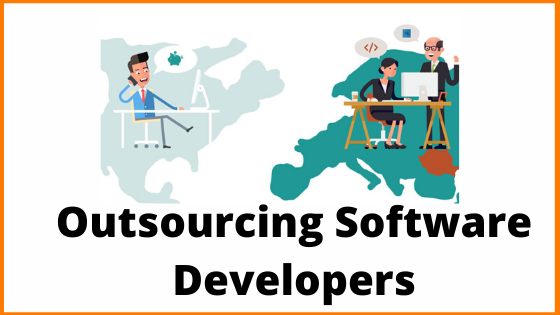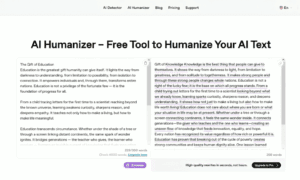A dedicated software development team supplied by an external provider is best understood as a variable-capacity extension of an in-house engineering group. It follows three rules. First, every backlog item, milestone, and metric is aligned with the client’s business targets rather than the vendor’s utilization goals. Second, work remains transparent: repositories, test results, and decision logs are accessible to the client at all times. Third, the provider is obliged to deal with change, refining scope or priorities without lengthy renegotiation when market or regulatory events force adjustment.
The article is based on case studies of Belitsoft, an outsourcing software development company. Their experts in staff augmentation, offshore R&D dedicated teams, and the extension of R&D development centers provide clients with high-quality technical expertise to improve software delivery and benefit financially.
Market Context and Demand
Demand for senior engineers outstrips local supply in many regions, while boards continue to favor variable operating expenses over fixed payroll. Outsourcing a dedicated team taps a global talent pool and avoids sunk costs in desks, hardware, and benefits. It also shortens time-to-product: a project that might stall for months of recruitment can start in days once the contract is signed.
Organizations usually adopt the model for one or more concrete reasons. They need skills that are rare in their region, face immovable release or compliance deadlines, wish to reserve permanent staff for strategic R&D, or trade off against the total expense of maintaining an idle team during trough periods.
Startups often use dedicated teams to meet investor milestones without delaying go-to-market dates. Enterprises use them for cloud migrations, regulatory updates, or new customer-facing services that overwhelm existing capacity.
Engagement Models
In a full-fledged arrangement, the vendor delivers project management, business analysis, architecture, coding, quality assurance, DevOps, and UX/UI design as a single package. The client supplies strategy, product direction, and acceptance criteria – the vendor executes and returns all artifacts, documentation, and intellectual property on a shared platform.
In a selective-function arrangement, the client keeps chosen roles in-house – perhaps architecture and product ownership – and outsources only defined activities such as test automation, front-end implementation, or release engineering.
Both structures preserve ownership of code and documentation – the difference lies in how much day-to-day control and administrative load stay inside the organization.
Financial Considerations
The first is team size and role mix. A blended structure of senior, mid-level, and junior engineers plus architects, DevOps specialists, designers, quality engineers, and project managers prevents overpayment for routine tasks while reserving high-cost expertise for key decisions.
The second variable is skill scarcity. Cloud-native security, machine learning inference, or privacy-preserving data pipelines attract premium rates and are assigned only where they deliver strategic value.
Third comes location. Nearshore or offshore centers typically invoice at between one-quarter and one-half of North American on-site rates while meeting the same engineering standards.
The fourth cost factor is compliance effort. Projects that fall under frameworks such as HIPAA, ISO 27001, or the GDPR require extra documentation, audit evidence, and security design reviews that add predictable hours.
In a monthly flat-fee contract, the client pays a predictable amount based on the agreed headcount and seniority mix – the team composition can be increased or decreased at sprint boundaries.
A time-and-material contract bills only the hours worked, suitable for exploratory backlogs or tasks such as complex data import/export that fluctuate month to month.
Locating the team offshore introduces further efficiency. Rates remain transparent, often two to four times lower than onshore equivalents.
Operational Benefits and Capacity
Recruitment disappears from the client workload because the provider sources, interviews, onboards, and equips all personnel.
Ramp-up is fast: preassembled squads that have already worked together usually reach target throughput inside a week.
Existing toolchains remain in place – Jira, Azure DevOps, GitLab, Slack – because the provider adapts to current processes instead of forcing replatforming.
Technical ownership stays with the client, yet the external staff contribute patterns and templates drawn from other domains.
Day-to-day task allocation, standups, blocker removal, and status reporting are executed by a vendor project manager, reducing internal management overhead while preserving decision authority.
Additional structural strengths widen the performance gap between dedicated teams and ad hoc contracts. Major providers cover dozens industry domains, from healthcare and finance to industrial IoT and retail media. They supply anything from half an FTE for a niche task to more than 100 FTEs for multiyear platform transformations.
Standardized assembly practices let them ramp an initial squad inside two days and double headcount in under a fortnight. Internal accelerator libraries – tested microservice skeletons, CI/CD templates, security-hardening scripts – can cut new feature development effort by up to forty percent.
Larger talent pools make niche hiring – for example, DevSecOps architects or mixed reality designers – faster. Projects launch quickly, and the provider PM synchronizes time zone overlap or follow-the-sun handoffs so communication remains direct. The external crew adapts to the client’s business culture and governance regime, operating as an integrated part of the engineering function rather than a detached subcontractor.
Who Benefits and Expected Outcomes
First are firms that require deeper technical expertise than their local market can supply. Second are teams facing strict regulatory or market deadlines that preclude a lengthy internal hiring campaign. Third are venture-backed companies that need to demonstrate product traction before the next funding round. Fourth are organizations that want managed developers to handle feature execution while internal architects focus on defining strategic roadmaps.
Delivery remains business-oriented, producing software that is scalable, maintainable, and readily extended.
Senior external engineers transfer knowledge to in-house staff through code reviews and joint design sessions. Fixed monthly cost replaces variable internal overhead because desktops, PTO, and office space remain on the vendor’s books.
Providers with sector-specific experience – healthcare systems, fintech platforms, or logistics optimization – reduce onboarding time and avoid industry-specific pitfalls.
Large or fast-moving projects stay feasible because team size can expand or contract inside the same legal structure.
Confidentiality is protected by contractual and technical controls, and certified compliance frameworks satisfy auditors.
Implementation Process
Selecting a Provider
Needs analysis defines which roles, components, or service layers to externalize.
Vendor research checks domain references, ISO certificates, security practices, and sample documentation.
A request for proposal fixes scope, budget, timeline, and evaluation criteria.
Proposals are reviewed for technical soundness, staffing plans, cost, and schedule, often supported by candidate interviews or a brief paid pilot.
The contract stage locks payment model, milestones, intellectual property terms, confidentiality, service-level targets, and termination options.
Onboarding then grants infrastructure access, introduces both teams, establishes meeting cadence, reporting formats, and escalation channels, and confirms security credentials so productive work can begin immediately.
Internal Ramp-up
Mature providers run an internal four-step ramp-up that dovetails with the client process. Project scoping divides work into teams with a required number of developers, each led by a senior engineer, so that oversight remains manageable.
Candidate preparation generates shortlists of resumes and refines them until the client approves every team member.
Onboarding formalizes roles, deliverables, collaboration rules, and measurable KPIs in a signed service-level agreement.
Once the agreement is in place, staff are deployed within one or two working days and reach planned velocity during the first sprint.
Execution and Team Composition
Execution is supported by a project management office containing certified PMs. The PMO maintains resource allocation models, communication matrices, reporting templates, and risk registers.
Quality and security KPIs are embedded in each sprint plan. Change-control stages limit scope creep and weekly or biweekly dashboards give stakeholders clear line of sight to cost, schedule, and defect trends. Knowledge-management workflows ensure that design decisions, test cases, and operational runbooks are documented and retrievable.
Front-end specialists handle cross-browser usability, responsive layouts, and user interface refinements using current JavaScript frameworks and CSS strategies.
Back-end developers create secure APIs, data models, and algorithms in Python, Java, Golang, C#, Ruby, or PHP.
DevOps engineers manage infrastructure as code, CI/CD pipelines, container platforms, and DevSecOps guardrails.
Designers convert product requirements into prototypes and visual assets using Figma, Illustrator, and motion graphics tools.
Quality engineers build and maintain automated test suites in Selenium, Cypress, or comparable frameworks to keep regression risk low.
Alternative Cooperation Models
Staff augmentation contracts are suitable for short skill gaps or seasonal traffic peaks but leave nearly all delivery risk and coordination with the client.
Full project outsourcing is useful when no internal bandwidth exists to create a new service from scratch – the vendor accepts end-to-end responsibility but usually works in a separate delivery structure where midstream change is expensive.
A dedicated team occupies the middle ground: domain knowledge accumulates over time, visibility remains high, and risk is shared rather than shifted entirely to one side.
Executives can select among these approaches by answering four practical questions: whether scope is stable or fluid, which deadlines cannot move, where persistent skill or capacity gaps exist, and what minimum compliance standard must be met. The answers generally point unambiguously to augmentation, a dedicated team, or turnkey outsourcing.
The Bottom Line
When these practices are combined, the dedicated team model becomes a controllable capacity lever rather than a cost-cutting gambit. It converts fixed staffing into a service that can expand or contract with portfolio demand, integrates with existing governance, and delivers specialized skills without delaying roadmaps.
Strategic ownership remains inside the organization, while day-to-day execution is handled by a group whose scope, cost, and performance are fully visible and subject to jointly defined service levels.
The approach is therefore an operational tool for executives who need predictable throughput, transparent cost, and assured compliance in environments where product demand, regulatory pressure, and talent availability are all in flux.
About the Author:

Dmitry Baraishuk is a partner and Chief Innovation Officer at a software development company Belitsoft (a Noventiq company). He has been leading a department specializing in custom software development for 20 years. The department has hundreds of successful projects in AI software development, healthcare and finance IT consulting, application modernization, cloud migration, data analytics implementation, and more for startups and enterprises in the US, UK, and Canada.





























